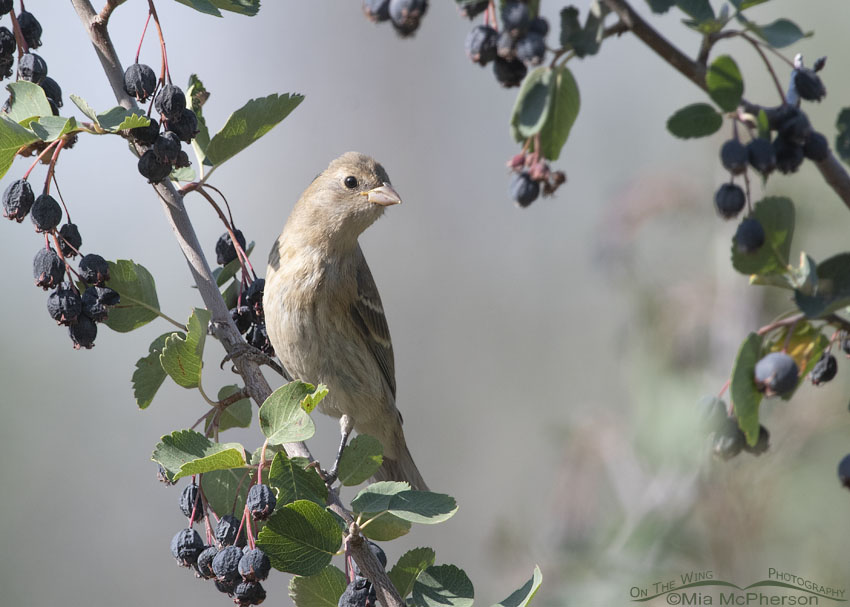While I was driving through a Wasatch Mountain canyon two days ago I spotted a clump of chokecherry trees and serviceberry shrubs growing close together that were very productive for spotting birds because of the abundant fruit on their branches.
 Juvenile Lazuli Bunting perched on a Serviceberry – Nikon D500, f8, 1/1000, ISO 640, Nikkor 500mm VR with 1.4x TC, natural light
Juvenile Lazuli Bunting perched on a Serviceberry – Nikon D500, f8, 1/1000, ISO 640, Nikkor 500mm VR with 1.4x TC, natural light
It was kind of late in the morning, after 10 am, and the sun was already high in the sky plus the light was getting harsh or I would have spent far more time in that area photographing the birds that came in for the ripened fruit that hung heavy on the shrubs. I saw warblers, an immature Spotted Towhee, Cedar Waxwings, Black-capped Chickadees, Lazuli Buntings and a curious fawn in that area.
Even though the sun was high I couldn’t resist photographing a juvenile Lazuli Bunting that flew in and perched on a Utah Serviceberry branch because to my eye the setting was both enchanting and very appealing. I also liked the cocked head of the young bunting and the eye contact I had with it. This Lazuli Bunting is young enough that it still shows some streaking on its chest and the gape is clearly visible, at this age I wouldn’t be able to tell if this is a female or a male so I wouldn’t feel comfortable labeling its gender.
In the 1820’s Thomas Say, a well known naturalist, gave a specimen of a Lazuli Bunting that had been collected in the Rocky Mountains of the western U.S. to Charles Lucien Bonaparte, another well known naturalist, who described the bunting and named it the Lazuli Finch (Fringilla amoena), today we know them as Lazuli Buntings (Passerina amoena).
Lazuli Buntings are migratory and it won’t be long before they start migrating to their wintering grounds. I have been seeing far more females and juveniles than I have adult males but I did see one male land in a tree on the hillside behind this serviceberry after I photographed this juvenile.
Life is good.
Mia
Click here to see more of my Lazuli Bunting photos plus facts and information about this species.


I expected a blue bird, but this bird and the setting are very pleasing!!! Nice…
Yet another delightful little bird.
Smiling at ten oclock being relatively late in the day. I agree but my partner (who given his druthers springs out of bed at the crack of noon) would argue the point.
Beautiful, the setting is lovely.
Very cool photo Mia